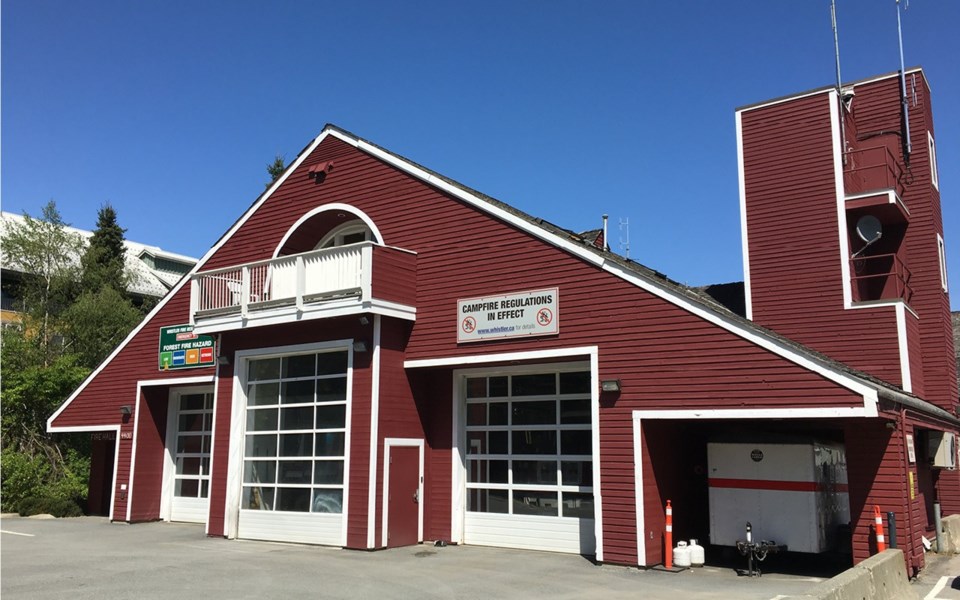Whistler will have some added protection against the threat of wildfires this summer in the form of a new early-detection system.
"We'll have two cameras, one mounted on the top of Whistler Mountain, one mounted down by the transfer station at the Callaghan entrance. It will cover off about 70 per cent of the Whistler Valley in terms of being able to monitor for smoke and heat signatures, and give us early detection on any wildfire events," said Whistler Fire Rescue Service (WFRS) Chief Geoff Playfair in a presentation to council on May 22.
"The job has been in progress for the last few months, and we intend to have it installed and up and running by the third week of June."
The cameras come from a German company called FireWatch, Playfair said, with which the WFRS has entered into a two-year trial.
The cameras will include a base monitoring station at the fire hall, and a notification system telling the WFRS to check the camera when smoke is detected.
"So it allows for some false positives in that you want it sensitive enough to detect smoke, but by being sensitive enough to detect all smoke, it may be detecting smoke off the barbecues on the top of the roundhouse or who knows what," Playfair said. "So it takes a human eye to really determine is that a problem or not a problem."
The department also purchased three new wildfire response vehicles ahead of the 2018 fire season.
"They should be ready by the middle of June," Playfair said. "And they'll also have the ability to modify for a medical response as well."
Playfair was on hand to present the WFRS' 2017 internally completed annual report—the department's first external report in over a decade.
The total number of calls to the WFRS has been steadily increasing since 2010, reaching a record high of 1,663 in 2017, Playfair said.
"What we see is a direct correlation between the number of people in the valley and the number of problems that occur," he said. "And so in 2009 when we were building up for the Olympics, the numbers were fairly high (1,501 total calls that year), and they dropped off in 2010 ... as business increased we see the numbers increasing up until last year, where we set a new high for us at 1,663."
The increase over 2016 alone (when the WFRS fielded 1,508 calls) represented a 10-per-cent jump.
Councillor Steve Anderson asked how long the department can handle the increasing numbers of calls under current staffing numbers.
"I think well into the future," Playfair said. "Short of a radical increase in bedcap, I don't see that those numbers are going to continue exponentially. I think you will see it levelling out at some stage, and I think our current model would be able to manage all of that."
What may be less sustainable is the increase in First Medical Responder (FMR) calls the WFRS have been answering.
Over the last nine years, the percentage of Alarms Ringing calls versus FMR calls has approached an even 40-per-cent split. The other 20 per cent is made up of calls across a spectrum of issues such as gas leaks, illegal burning and so on.
"To me, this indicates a significant downloading by the province, which is also projected to increase to the year 2023—ambulance services cut back or not relied upon, (while) the fire service response is," Mayor Nancy Wilhelm-Morden said.
The mayor pointed out a new Request For Proposals has been issued to develop a framework to examine the current scope of services offered by the WFRS, along with a proposal for "forward-looking service delivery models" that includes recommended allocation of resources.
"It will be very interesting to see what we get in response to that RFP, and in particular to these first medical responder calls," she said.
In total, Whistler spent 89 days in "high" or "extreme" fire-danger rating in 2017, and the WFRS conducted 35 nights of public area campfire patrols.
"Typically (we do patrols) if we're in extreme and/or it's just a busy weekend and maybe we're in high," Playfair said. "So right now we would be looking at it day to day as to how we would manage it."
Fires inside Whistler can be reported by calling 911, while wildfires outside municipal boundaries can be reported by calling 1-800-663-5555 (or *5555 on a cell phone).
The report also included a progress update on the 2015 Fire Services Review, which detailed 14 recommendations dealing with everything from legislation, training and firefighting assets, all with an eye towards making things more efficient.
One of the key recommendations out of that report was to close Fire Hall 2 located at 8900 Highway 99, and redistribute its assets to Stations 1 and 3—an option that has now been taken off the table, though some maintenance will be required.
The full report can be found in the May 22 council package starting on page 21: www.whistler.ca/municipal-gov/council/meeting-agendas-and-minutes.
Moving forward, the WFRS will produce quarterly reports along with an annual summary to keep the community informed as to its operations.




